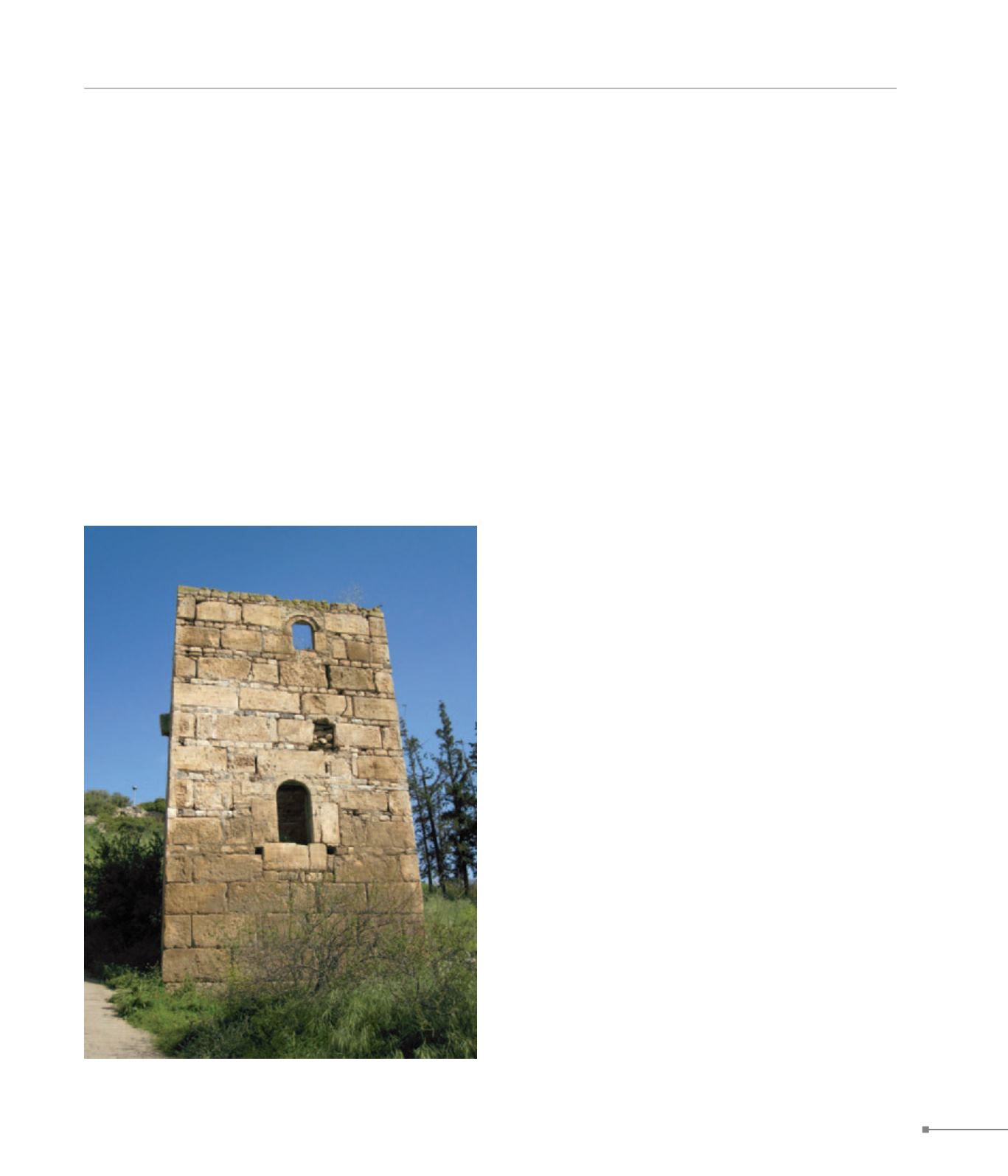
Achinos (Echinos).
Strongyli.
THESSALY
157
145. Achinos, tower (Αχινός, πύργος)
145.
Achinos (Echinos).
The ancient city of Echinos was of paramount military impor-
tance in the Byzantine period, as it was on the road connecting
the plain of Lamia with Demetrias and Phthiotian Thebes (Nea
Anchialios). Its defensive significance drew the attention of Jus-
tinian, who renovated the ancient walls. Echinos was appointed
an episcopal see, whose bishop signed the Proceedings of the
Third Ecumenical Council of Ephesus (431). In 551-2 the city
was destroyed by an earthquake and flooded by a tidal wave.
Since then, there has been no written mention of Echinos (be-
sides a reference by Byzantine Emperor Constantine VII Por-
phyrogennetos). At the top of the hill, where the defensive walls
of the ancient citadel are located, survive sections of possibly
Justinian fortifications. At the foot of the hill there is a square
Frankish tower, whose upper levels display repairs.
146.
Scarpheia.
Close to the present-day Scarpheia there exist traces of the
episcopal see of Carphia, which prospered in the 5th c., but
was destroyed by an earthquake in 551-2. Carphia was the
main harbour of Pentapolis and offered grain storage.
147.
Raches.
On the coast at Raches, near the town of Pelasgia, Early Chris-
tian remains have been detected, extending underwater.
148.
Monolia.
Monolia, known today as Makrouli, belongs to the complex of
islets named Lichadonisia and is located near Strongyli. It pre-
serves Early Christian ruins − and possibly a basilica.
149.
Strongyli.
On this islet, part of Lichadonisia – twenty minutes’ distance
from Kamena Vourla –, a naiskos, possibly of the 11th c., was
recently revealed. Defensive walls have also been detected. It
has been reported that Hosios Gregorios from Mystras led a
monastic existence here in the 11th c.


